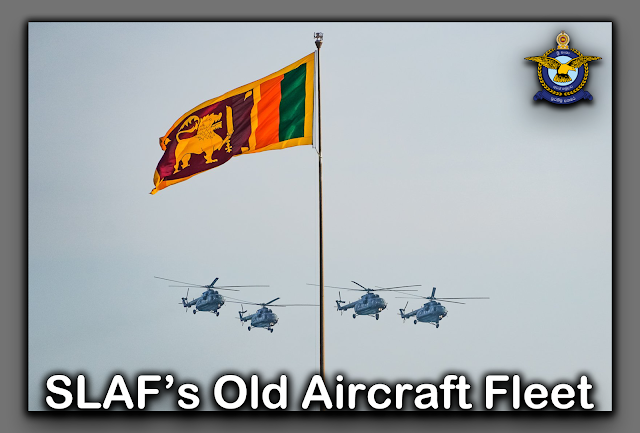Sri Lanka’s Old Aircraft Fleet
Sri Lanka, an island nation in the Indian Ocean, holds a fascinating aviation history that mirrors its strategic military developments and international alliances. Over the decades, the country has operated a diverse fleet of aircraft, many of which now belong to history.These vintage machines, some relics of colonial legacies and others acquired during the height of civil conflict, tell the story of Sri Lanka’s evolving air power and aviation needs.
Colonial Beginnings and Early Aircraft
The roots of Sri Lankan Aviation can be traced back to the British colonial era, when the Royal Air Force (RAF) operated from the island, especially during World War II. Airfields were established in places like Katunayake, Ratmalana, Sigiriya, and China Bay. Post-independence, the Royal Ceylon Air Force (RCyAF) was formed in 1951, inheriting both infrastructure and aircraft such as,
- de Havilland Canada DHC-1 Chipmunk – Used as a basic trainer for early cadets.
- de Havilland Vampire – The RCyAF's first jet fighter introduced in the 1950s, reflecting the country’s early ambitions in jet-powered aviation.
- Hunting Percival Provost – Another British trainer aircraft used in pilot training.
1960s to 1970s: Expansion and Support Roles
During the 1960s and 1970s, the Royal Ceylon Air Force (renamed the Sri Lanka Air Force in 1972) expanded its fleet to support both peacetime and internal security operations. Key aircraft from this period include,
- Douglas C-47 Dakota – A robust World War II-era transport aircraft used for cargo and personnel.
- Scottish Aviation Pioneer and Twin Pioneer – Short takeoff and landing (STOL) aircraft used for troop and supply drops in rugged terrain.
- Alouette III Helicopters – Light utility helicopters used for search and rescue, reconnaissance, and VIP transport.
1980s–2000s: Conflict Era and Diverse Acquisitions
The Sri Lankan Civil War (1983–2009) drastically shaped the SLAF’s fleet composition. The need for ground support, troop transport, and rapid-response capabilities led to a significant diversification in aircraft procurement. The SLAF began acquiring aircraft from Eastern Europe, China, and Israel.
Aircraft from the Conflict Era,
- SIAI-Marchetti SF.260TP – Italian light aircraft used for both training and ground-attack roles.
- FMA IA 58 Pucara – An Argentine counter-insurgency aircraft with twin engines, ideal for low-level attacks.
- Mikoyan-Gurevich MiG-17 and MiG-23 – Soviet-designed jets acquired for air superiority and strike missions.
- IAI Kfir C2/C7 – Israeli multirole fighter jets that became the backbone of the SLAF's offensive operations.
- Mil Mi-17 and Mi-24/35 – Russian helicopters used extensively for troop transport and close air support.
 |
| IAI Kfir C2 with weapons and bombs |
Transport and Maritime Surveillance
Besides combat aircraft, the SLAF also operated older models for logistics and surveillance,
- HS 748 (Avro) – British twin-engine turboprop aircraft used for troop transport and cargo.
- Beechcraft Super King Air (In service) – A light surveillance aircraft fitted with maritime radar.
- Y-12 and An-32 (In service) – Chinese and Soviet aircraft used for transport in mountainous and remote areas.
Legacy and Preservation
While many of these aircraft have been retired, they remain an important part of Sri Lanka's aviation heritage. Some are preserved in museums like the SLAF Museum at Ratmalana, offering a window into the country's aerial legacy. These aircraft also reflect the shifting geopolitical influences over Sri Lanka’s military procurement from Western Europe to the Soviet bloc and China.
👉 If you know more details, Please comment below.
Photo resources - SLAF media, travelWings journal, wikiphoto

.png)
.jpg)
.jpg)
.jpg)
.jpg)



.jpg)





No comments:
Post a Comment